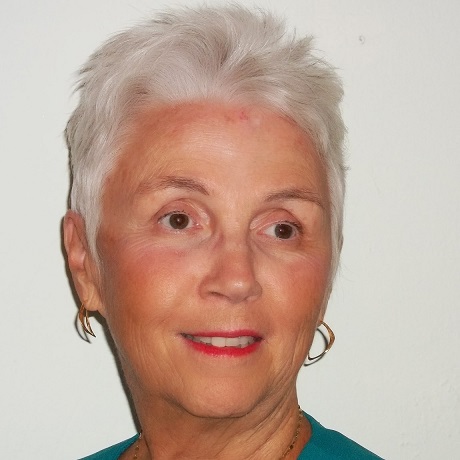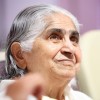
After 20 years of studying meditation with the Brahma Kumaris, I still hear from others the same questions I had when I first started: “Who ARE these people?” “What is their secret agenda?” “How do they manage to accomplish so much?” “How are they funded?” “Are you in a cult?”
In the interest of full disclosure, I am an American, born in the USA, a professional with several degrees, a long history of community involvement, volunteerism, activism, and spiritual seeking. My experience with the Brahma Kumaris is shaped partially by my perspective as a Westerner. I am studying with a group headquartered in India and with decidedly Eastern roots. And no, I am not in a cult!
For many, the first encounter with the Brahma Kumaris comes after attending a public program, being introduced to the BKs by a friend or family member who is a BK, or having a date with destiny. In my case, it was the latter, but that is a story for another time.
After studying and practicing meditation with the BKs for just a short while, I had these same questions (as did my family and friends who knew of my involvement). I thought it might be helpful to write an article that attempts to answer those questions with my experiences, inquiries, and observations over these past years. I cannot speak for the organization of course, but I believe that my experiences are typical and somewhat representative of what others may have experienced, particularly in the West.
“Who ARE these people?” This is still a vexing question as BKs defy easy labeling. If you have attended any type of BK program you will probably note the diversity among the participants. BKs include people of all races, ethnicities, languages, religions, ages, professions, class, gender or sexual identities, economic status, health status, cultural traditions, and situations in life. In the USA, we profess to value diversity, but too often fail to find it in actual practice. What can possibly hold a group this diverse, together? In my experience, what holds the organization together and keeps individuals involved is a love for God. Along with that comes the aim to become better people, to develop spiritually, and to support each other in that quest. The primary method for doing this is raja yoga meditation.
From the seeds planted in 1936 by a single founder known as Brahma Baba, and a small group of (mostly young) women, the organization has spread to more than 120 countries, and counts about 900,000 students who attend classes in centers on every continent. The Brahma Kumaris World Spiritual University headquartered in Mt. Abu, India, is an international non-governmental organization (NGO) in general consultative status with the Economic and Social Council of the United Nations and in consultative status with UNICEF. The organization is also affiliated to the UN Department of Public Information and has an office at office at 866 UN Plaza in New York.
Since the beginning, women have played a leadership role. The current Administrative Head of the organization, Dadi Janki, is 99 years old and is actively engaged is all aspects of the organization’s worldwide service. It was Dadi Prakashmani (c. 1923 – 2007) who dispatched Dadi Janki to London in 1974 to start the first center in the West. Men play an active role as well, serving as department heads, regional or national coordinators, or center directors.
BK centers around the world are organized and operated autonomously under the laws of each jurisdiction. In the USA for example, the Brahma Kumaris are a 501c3 non-profit organization. BK Mohini Panjabi serves as the Regional Coordinator for all of the Americas. In the USA, separate centers have registered in 12 states and the District of Columbia. There are also two retreat centers open to the public; one in upstate New York, and the other near San Francisco, California. The USA organization has a board of directors who oversee the affairs of the organization. There are no paid employees. All programs and activities are carried out by volunteers who donate their services so that others may take benefit.
The not-so-secret-agenda of the Brahma Kumaris is to offer people the opportunity to experience their own inner worth and dignity, as well as provide programs and courses designed to enhance one’s spiritual development. This is no small thing, as we all come to the BKs carrying our own inner “baggage.” Dadi Janki often told us to “leave something behind” when we came to the headquarters in India or the Global Retreat Centre in Oxford. She encouraged us to leave behind our sorrows, bad habits, and negative ways of thinking, and to take with us the sense of peace and contentment, and sometimes wonder, we experienced during our time together. Such generous hospitality often conflicts with our modern skepticism towards kindness. We wonder what is behind all of this. When will they ask for something? What’s the hidden agenda? My own background in administration and organization development makes me curious about how things get done. As an outsider to the inner workings of the organization, I marvel at the level of accomplishment that rivals any multinational corporation or global foundation.
“How do they manage to accomplish so much?” The BKs have an impressive portfolio both in India and in every country where centers exist. For example in India, kitchens are considered sacred spaces. The Brahma Kumaris headquarters in Rajasthan has the largest solar kitchen / sacred space in the world, where upwards of 25,000 people can be fed three meals per day. The World Renewal Spiritual Trust (WRST), a sister organization of the Brahma Kumaris, was established to create India One, a pioneering solar thermal power plant to foster sustainable communities. The project has received funding from both the Indian and German governments and has a long list of professional partners. The project develops and promotes renewable energy technology and makes it available at affordable prices. For example, solar lanterns, home lighting systems, and solar cooking boxes are available through the organization’s Solar Shop on the Shantivan campus.
In the UK, Nuneham House, located in Oxfordshire, is a 17th Century palladium villa, with a rich history of poets and royalty. The organization executed a long-term lease with Oxford University to operate the facility, known as the Global Retreat Centre. Since opening in 1993, a year-round program of residential retreats, day programs, and special lectures and events have been offered to the global community. More than 10,000 individuals have enjoyed the residential hospitality of the Global Retreat Center, with thousands more enjoying the programs offered to the community at large.
Programs spread organically throughout the BK world and often “go global”. Large-scale community programs like “Peace in the Park” started at the Global Retreat Centre and with the willingness of volunteers who took leadership roles, similar programs were adapted for public park spaces in the USA at Central Park in New York, Golden Gate Park in San Francisco, and Arts Park in Hollywood, Florida. These programs are offered as a community service and attract local residents to a relaxing and welcoming atmosphere for the whole family. There are many examples of successful local, national, and international programs carried out by the Brahma Kumaris. Some have evolved into separate organizations with their own governance structure; notably Living Values Education (a global character education program) and Images and Voices of Hope (a global community of media professionals). These and other special initiatives involve a wide range of individuals, most of whom are not students of the Brahma Kumaris.
Understandably, people wonder how all this gets accomplished, particularly by an organization that has no employees and collects no fees. The answer is…. a lot of harmony, cooperation and “yoga power”. The secret ingredient is yoga power, i.e. the power of meditation. Twenty years ago, that would have sounded peculiar to the average person. But now, there is a growing body of research and evidence to support the power of meditation to effect changes in one’s outlook, attitude, and energy. When thousands of BKs are aligned – for example on the 3rd Sunday of each month for World Peace Meditation – the results can be quite powerful. I don’t expect anyone to take my word for this, but invite you to experience it for yourself. A more concrete example is the generally accepted fact that the vegetarian food served by the BKs is always tasty and sustaining. Little is made of the fact that all meals are cooked by volunteers who stay in remembrance of a divine source while cooking. It is served by volunteers who also stay in remembrance and offer it to us with special hospitality.
“How are the BKs funded?” Nonprofit organizations of all sorts rely on individual donors, as do the Brahma Kumaris. Perhaps it is most easily described as a “pay it forward” mentality. The natural generosity of humans is to want to show appreciation when we have received something beneficial. The Dalai Lama has said, “Generosity is the most natural outward expression of an inner attitude of compassion and loving- indness”. Most agree that the Brahma Kumaris are extremely generous, and that begets generosity in return.
Centers are self-supporting and largely rely on the local BK community to provide financial support for the physical facility as well as any public programs offered in the community. The physical facilities housing BK centers vary widely, from stately mansions to more modest facilities and small “gita patshalas” (study places in people’s homes). The BK organization in the USA owns or rents several properties for the purpose of providing opportunities for the general public to learn meditation and deepen spiritual practice. The aim is to serve everyone in the area of a center, and to create enough centers to serve the entire country. In this way, individual centers take various forms, but the essence of what goes on inside is the same world-wide.
In the USA, wherever possible and practical, BKs may organize large-scale programs like Peace in the Park in cooperation with local government entities and/or other nonprofit organizations. This enables valued programming to be offered to a wider audience. From time to time, the Brahma Kumaris may receive in-kind, privatefoundation, or corporate support for a particular program or conference, but this is the exception rather than the rule.
“Using everything in a worthwhile way” is a hallmark of BK operations. This translates into an attitude of economy and eschewing waste. Keeping in mind that each country has its own laws and regulations, the principles of economy, reducing waste, respecting and serving the local community and leading by personal example are important lenses through which to view the Brahma Kumaris.
“Is this a Cult?” In a general sense, the Brahma Kumaris have been given this label because the teachings represent a set of beliefs or practices that may seem out of the ordinary to some people, in some cultures, or in some settings.
In 1936, when the founder turned over his wealth to a Trust in the hands young women, this was unheard of in India. In 1974, when BKs introduced raja yoga meditation to the West, it was considered a practice for “hippies” or the eccentric. Even in 2014, when women in leadership roles and the practice of meditation are mainstream ideas in many Western societies, there are still BK systems and practices that seem unconventional. With the advent of nearly instant communication, even the “murli” (the source of BK teachings), and the once-private meetings through the organization’s “trance-messenger” Dadi Gulzar, are live-streamed to local BK centers around the globe.
Some individuals write of their struggles with guilt, anger, and negative emotions that find expression in labeling the Brahma Kumaris a “cult.” This is how they have perceived the Brahma Kumaris at various times and in various places in the world. We cannot deny anyone’s experience. However, I find it equally important to acknowledge my own experience of the organization’s generosity, hospitality, and authenticity. For some, this path resonates; for others, it makes no sense at all. There is nothing in the Brahma Kumaris tradition that prohibits anyone from leaving at any time.
Finally, the Brahma Kumaris value newness. What is offered is an ancient wisdom that is relevant to the modern world. The journey takes us back to our own selves, and opens the door to a personal experience with the divine Source of all energy. Ultimately, in knowing ourselves, we can know God. All questions are answered, all doubts dispelled, and happiness is the result! Who wouldn’t want that?






Dear Kathy,Thanks for sharing your thoughts,views,experience and ALL other aspects of the Brahma Kumaris with people all over the world to whom this Institution is so unique,uplifting to the followers and a mystery to some in so many good ways.
I cannot go without a day listening to words of wisdom from Sister Shivani,and my friends and family are surprised and in awe of my new habits,views and attitude towards the people I meet and greet anywhere and everywhere.I will be surprised if a visitor to their meeting does not get inspired as well.Om Shanti.
Inderbir Gill,Chicago-Illinois,USA.
Very beautifully summarized article. It accurately describes the activities of Brahmakumaris. Thank you Kathy for sharing your experiences with this organization.
Dear Kathy,
Thank you for your article. It is wonderfully written and accurately (and invitingly) tells the BK story.
To experience that story in the ways you describe is life transforming, to say the very least. Although my time at Brahma Kumaris events has been sporadic of late, my connection with this wonderful, spiritual Family remains profound and forever unbroken. Thank you for sharing.
Peace,
Lloyd+
Beautiful Article Kathy, which accurately describes the aims, practices and power behind the Brahma Kumaris.
nice write up! yes, that kitchen IS in fact the largest in the world and it also happens to be solar powered mostly (not just the largest solar kitchen but kitchen kitchen)
Dear Kathy, What a wonderful expression of a personal experience of this interesting, unique and highly relevant social movement.
With appreciation, Judy
Dear Sister Kathy,
Thank you for writing & sharing the article you’ve always wanted to write. I am happy to be
Part of the BK family too and am amazed at the power of Raja Yoga & the power of God. I keep coming back because, yes, I experience God’s
Love daily– love u GOD!!
In ️sweet remembrance ,
Timmy Cruz BK PHILIPPINES
What a great article – it’s one I too have waited a long time to read.